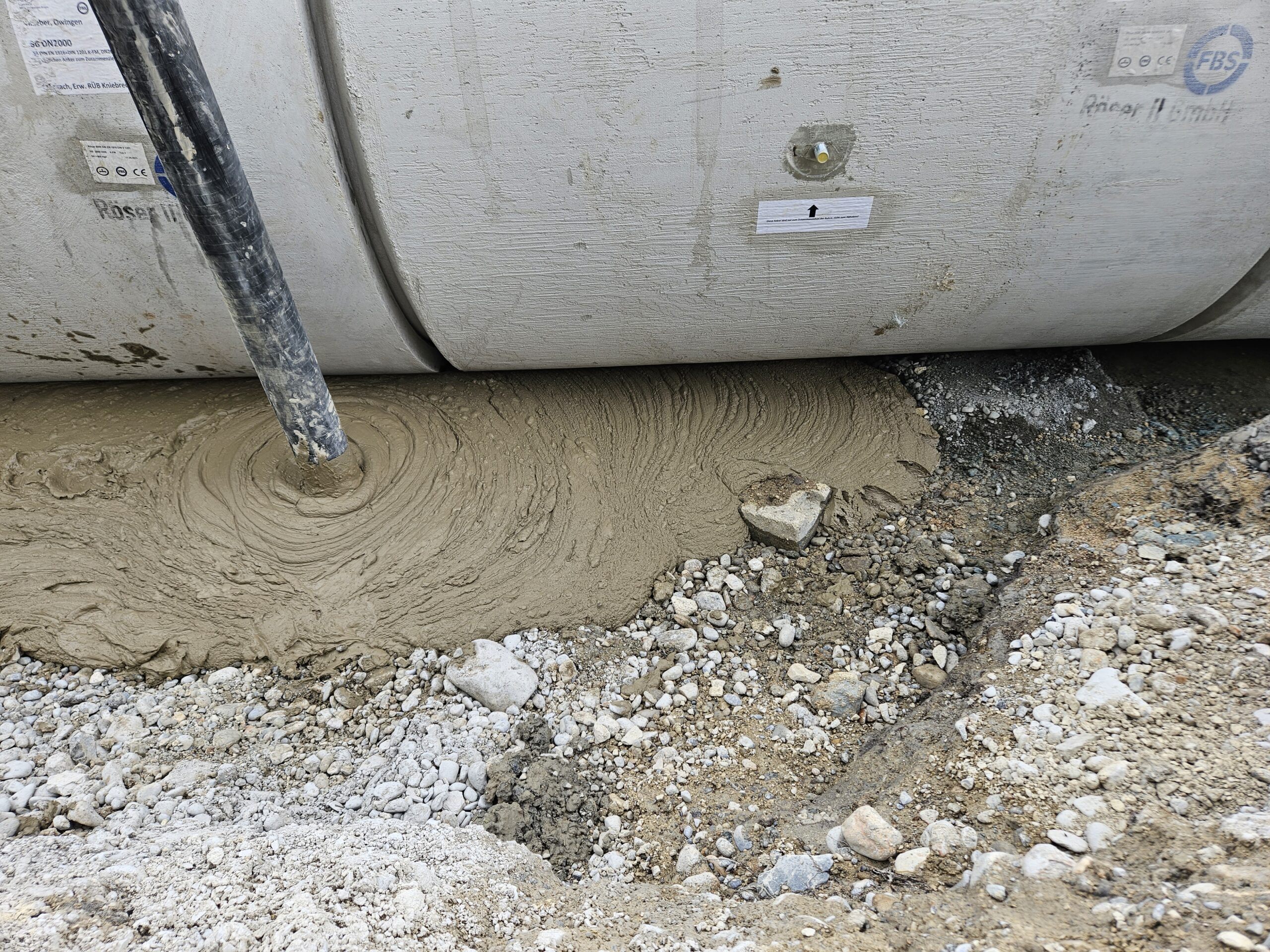The most economical solution for construction projects
As a geology company with decades of experience in countless small, medium and large construction projects in civil engineering, we do not believe that there is always just one right foundation solution. Rather, this is decided on the basis of economic aspects against the background of the respective individual construction project.
Our “Technical floors” are to be understood in this context. They offer a further alternative for identifying the most economical foundation solution in each case.
Definition
Technical soil is excavated soil that is modified by technical processes in such a way that it fulfills its function as an optimal construction material and can be reused within the construction site.
Additives (e.g. stabilizers, plasticizers) can be added to the soil for the technical modification of the soil for backfilling as an optimal construction material, provided that these are proven to be environmentally safe.
Fundamentals
It can be deduced from DIN 18300 that the surveyor must describe what he considers to be the most economical foundation solutions for the earthworks of the respective construction project. In addition to the exact description of the foundation solution, the delivery materials to be used must also be specified.
The “construction site” is understood as a system in which it is assumed that all natural and artificially introduced materials interact with each other (e.g. an introduced force always generates a counterforce). When determining the most economical solution, it is therefore not a question of comparing the cheapest products. Sustainable economic efficiency can only be determined by looking at the whole system.

Criteria for determining economic viability
- Checking the completeness of the subsoil report, plausibility check
- Determination of the parameters relevant to the construction project from the subsoil report (soil, groundwater)
- Determination of the risk from the subsoil report
- Determination of the parameters required for the final and usage properties for the respective construction project (e.g. load-bearing capacity (dynamic, static loads), immobilization of pollutants, water permeability, thermal and electrical conductivity, vibration-damping properties, etc.) Load-bearing capacity (dynamic, static loads), pollutant immobilization, settlement behavior, water permeability, thermal and electrical conductivity, vibration-damping properties, etc.).
- Preliminary planning and pre-dimensioning of the foundation solution
- Pre-static calculations, FEM for more complex foundation solutions
- Determination and description of the required installation technology
- Determination and description of logistical requirements
- CO2-balancing if necessary
The result is the chemical and mechanical parameters of the soil required to fulfill the function of the building material to be used and the type of foundation to be selected.
Technical soils assume that economic viability is always given if the excavated soil extracted on site can be reused as a building material within the construction site after technical adaptation if necessary. In addition to the transportation and disposal costs for the excavated soil, the procurement of building materials is also eliminated, which leads to a considerable conservation of resources.
Further planning stages
The static calculations of the pre-dimensioned planning solution result in the essential characteristic values that the technical floor must achieve in order to fulfill the planned function with the necessary safety.
A recipe is created based on the excavated soil, the implementation of which results in a technical soil that should achieve the required characteristics.
If the technical floor does not meet the parameters required by the structural analysis, there are two ways to optimize it:
- The quantity of aggregates is changed so that the technical soil meets the specifications.
- The planned dimensioning of the foundation component is adjusted with the characteristic values achieved on the basis of the formulation to such an extent that a “safe” component is achieved.
